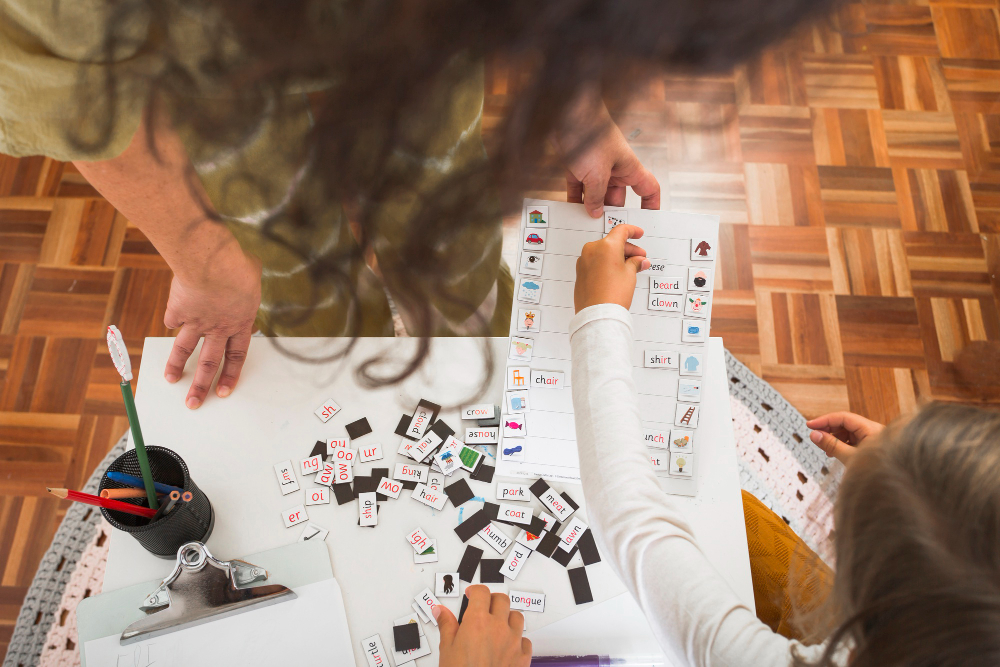Positive Behaviour Support (PBS) and Applied Behaviour Analysis (ABA) are behaviourist approaches widely used in schools to manage student behaviour. However, a growing chorus of neurodivergent advocates, educators, and researchers highlight that these methods often prioritise compliance and “normalising” behaviour over student well-being rcpsych.ac.uk. By focusing on making neurodivergent children appear neurotypical (meeting neuronormative standards), traditional PBS/ABA can neglect the child’s internal experiences and unmet needs rcpsych.ac.uk. For example, behaviourist programs might reward a quiet child or extinguish a stim without asking why the child is distressed – an approach that “fails to address the underlying reasons behind certain behaviours and the unmet needs they express” rcpsych.ac.uk.
-
Why sticker charts fail
Sticker charts and other incentive-based systems promise to motivate children through tangible rewards, yet they too often undermine genuine engagement by teaching students to focus on external validation rather than on the inherent value of learning or participation. When a child’s behaviour is…
Multiple studies and first-person accounts have also flagged trauma and harm associated with coercive behaviour therapies. Techniques like withholding favorite items, forcing eye contact, or discouraging stimming (self-soothing behaviours) may achieve short-term compliance but can lead to masking, chronic stress, anxiety, and even PTSD symptoms in autistic individuals rcpsych.ac.uk.
In one information guide, neurodivergent adults reported feeling traumatised by ABA/PBS methods that ignored their communication and sensory needs, causing “chronic stress, trauma, anxiety, and… internalised shame” rcpsych.ac.uk.
Over time, many autistic and ADHD students learn to mask – to hide their natural behaviours – in order to avoid negative attention, a survival strategy that takes a severe mental health toll bctf.ca bctf.ca.
As one B.C. parent advocacy letter describes, neurodivergent kids “mask, or repress their own needs… simply to fit into a system that shames and punishes them if they step out of what is deemed ‘normal’” bcedaccess.com. This masking and pressure to conform can erode a student’s sense of identity and safety at school.
-
The moral cost of leaving children in fight-or-flight
Robin was eleven the day he fell and came up swinging. It was recess, and something had happened—a misstep, a bump, a collision on uneven ground. His body hit the pavement. And when he rose, disoriented and humiliated, the first thing in his…
-
There’s no such thing as unexpected behaviour
This piece was hard to write. It holds my grief. It documents not only what happened to my child, but how systems made it worse by pretending to be surprised. I share it because too many families are made to carry this alone.…
Critics also point out that PBS and token-reward systems oversimplify human behaviour. The Alliance Against Seclusion and Restraint notes that while behaviour charts and rewards are common, “these approaches are not working” for our most vulnerable students endseclusion.org.
Behaviourism’s exclusive focus on observable behaviour and external reinforcement misses the complexity of neurodevelopmental differences, trauma histories, and sensory processing issues that drive student behaviour.
In short, when children melt down or act out, they are often communicating distress, not intentionally misbehaving – yet a behaviourist lens may see defiance to be suppressed rather than a call for help bcedaccess.com.
This mismatch has real consequences in BC classrooms: neurodivergent students face disproportionate discipline, exclusions, and restraints, largely due to approaches that demand they “conceal their differences” instead of addressing unmet needs bcsta.org bcedaccess.com.
What’s at stake
This is not just a question of teaching style or discipline policy. When schools rely on coercive behaviour frameworks like PBS, they create environments that reward masking, punish distress, and ignore the internal cost of compliance.
The long-term effects of coercive behavioural approaches like PBS extend far beyond the classroom. Chronic masking, stress-induced compliance, and repeated exposure to invalidating environments do not simply shape a child’s behaviour—they reshape their nervous systems, their immune function, their relationship to their own bodies. The research is clear: sustained dysregulation and forced suppression of self can lead to metabolic breakdown, autoimmune conditions, complex PTSD, suicidality, and other contributors to early death. When schools focus on performance over safety, they train children to survive by disconnecting from their internal signals—until one day, they can no longer hear what their bodies are trying to say.
We are not talking about preference. We are talking about harm. And the harm is preventable—if schools are willing to centre student safety, dignity, and regulation over the appearance of control.
Core principles of neurodiversity-affirming support
In response to these concerns, educators and disability advocates are advancing neurodiversity-affirming, trauma-informed, and disability justice-aligned models of support. These approaches reject neuronormative expectations – they do not demand neurodivergent learners “act normal” – and instead center the student’s unique needs, strengths, and agency. Key principles include:
Honour neurodiversity & identity
- Neurodivergence (autism, ADHD, learning differences, etc.) is recognised as a natural form of human diversity, not a defect to fix.
- Instead of trying to “cure” or hide a student’s autism, educators work to embrace it. This often means using identity-affirming language and celebrating neurodivergent role models.
- A B.C. teacher notes that “if neurodivergent students can see themselves reflected as valued and competent… they are more likely to feel comfortable and confident in expressing themselves” in school bctf.ca bctf.ca.
- In practice, this might involve featuring books and materials by neurodivergent people, using the infinity rainbow symbol for neurodiversity, and explicitly teaching that brains work in many different ways.
No more masking – authenticity over compliance
- A neurodiversity-aligned classroom does not force students to suppress their autistic or ADHD traits to fit in. Educators actively discourage masking and instead create an environment where being oneself is safe.
- As one B.C. learning support teacher writes, “people with Tourette syndrome, ADHD, or autism will regularly mask or camouflage behaviours to appear more neurotypical… [Masking] is exhausting… [and leads them] to feel like they have to hide who they are to be accepted.” Rather than expecting neurodivergent kids to constantly “hold it in,” teachers are urged to be mindful of this struggle and “encourage all students to be self-aware of their unique—and valid—needs”, sharing those needs so that everyone’s differences can be honoured in the classroom bctf.ca.
- In practical terms, this might mean a class agreeing that wearing noise-cancelling headphones, using stim toys, taking movement breaks, or avoiding eye contact are all respected options – not “bad habits” to be trained away bctf.ca bctf.ca.
Behaviour as communication
- A foundational shift is viewing challenging behaviours as signals of distress or unmet needs rather than wilful disobedience. This reflects both trauma-informed practice and the disability rights mantra “behaviour is communication.”
- School staff are learning that a student’s outburst or shutdown is likely a response to triggers (sensory overload, anxiety, frustration, confusion), not a character flaw bcedaccess.com.
- The National Autistic Taskforce (an autistic-led body) explicitly calls on caregivers to “view behaviour as distress, not defiance,” avoiding punitive responses and instead seeking to soothe the underlying distress rcpsych.ac.uk rcpsych.ac.uk.
- In a justice-aligned model, restraint and seclusion are last resorts to be eliminated; the focus is on preventing crises by recognising early signs of dysregulation and responding with support, not punishment rcpsych.ac.uk.
Student-centred and autonomy-focused
- Non-coercive frameworks emphasise giving neurodivergent students control over their lives and learning whenever possible.
- This aligns with disability justice principles of autonomy and self-determination. The Autistic Taskforce’s Key Principles of Quality Care stress empowerment: “Autonomy: Empower autistic individuals with meaningful choices and decision-making, not just in daily matters but in major life aspects.” rcpsych.ac.uk
- In schools, this means including students in developing their IEP goals, soliciting their input on supports and accommodations, and respecting their communication of consent or refusal. It also means including student voice when addressing behaviour – as one parent noted, neurodivergent children are too often excluded from decisions about their supports, treated as “objects of intervention rather than participants in their learning journey,” which must change bcedaccess.com.
- A commitment to inclusion “must also mean inclusion of student voices” in behaviour plans and problem-solving discussions bcedaccess.com.
Strengths-based and positive identity
- Moving away from deficit-focused models, educators are adopting strengths-based strategies that validate what neurodivergent students do well and how they prefer to learn.
- Teachers are encouraged to know each child’s special interests and abilities and incorporate them into learning, rather than fixating on what the child cannot do.
- This also means using positive language (e.g. saying a student is a “different thinker” with unique strengths, rather than defining them only by diagnoses).
- In BC, professional development courses now explicitly train teachers to “challenge assumptions” and reject deficit models, instead “designing strength-based learning environments” that support autistic students’ communication, agency, and well-being coursesforteachers.ca coursesforteachers.ca. The idea is that when a student’s talents and interests are leveraged, their engagement improves and behavioural issues often diminish naturally.
-
Our goals are not the same: ableism in bc public school
I want my children supported to grow and learn; schools uphold ableism by demanding they mask compliance or feign helplessness for support.
Sensory and emotional supports and low arousal environments
- A common feature of neurodiversity-affirming practice is proactively accommodating sensory needs and reducing stress in the environment. Instead of forcing all students into the same sensory box (e.g. expecting silent stillness under harsh lights), teachers provide options and flexibility to help students self-regulate. This might include creating a quiet corner or “sensory break” area in the classroom, offering noise-cancelling headphones, allowing movement (standing, pacing, or using a fidget), and adjusting lighting.
- The Autistic SPACE framework, for instance, highlights Sensory needs and Physical space as core pillars – ensuring the environment is calm and not overwhelming rcpsych.ac.uk rcpsych.ac.uk.
- Predictable routines and visual schedules are also used to reduce anxiety from uncertainty (the “P” in SPACE stands for Predictability as a key need) rcpsych.ac.uk rcpsych.ac.uk. In short, instead of expecting neurodivergent kids to endure distressing sensory conditions or unpredictable transitions, the adults modify the surroundings and schedule to be more comfortable and consistent.
- One BC teacher advises colleagues to “thoughtfully build a space where students can have a variety of sensory needs met,” offering diverse seating (rocking chairs, bean bags), softer lighting, and minimal visual clutter bctf.ca bctf.ca. These changes remove barriers to participation before problem behaviours even arise.
Relationship-driven and trust-building:
- Nearly all alternative frameworks emphasise the power of safe, trusting relationships in supporting behaviour.
- A trauma-informed, disability justice lens recognises that many neurodivergent students have experienced failure, stigma, or even abuse, and thus positive relational approaches are critical.
- Educators are encouraged to act as allies and co-regulators rather than authority figures doling out rewards and consequences. This might manifest as spending time simply connecting with a student (showing interest in their hobbies, using their preferred communication mode), so that the child feels understood.
- The NeuroRelational Framework and similar models focus on reducing “toxic stress” by building emotional connection and co-regulation first endseclusion.org. In practice, this could mean when a student is in meltdown or panic, the adult’s first job is to nurture and calm (through a gentle tone, reduced demands, offering comfort or space) rather than immediately correct the behaviour spectrumgaming.net spectrumgaming.net. As we’ll see below in specific frameworks like NEST, the initial Nurture step is about conveying safety and empathy, which lays the groundwork for any later problem-solving. By prioritising dignity, trust, and authentic relationship, these approaches align with the mantra “connection before correction.”
Collaboration over compliance
- Finally, non-coercive approaches replace one-size-fits-all behaviour plans with collaborative problem-solving. This means working with the student (and their family) to identify triggers, brainstorm supports, and agree on solutions – rather than imposing rules or sticker charts unilaterally.
- It also means interdisciplinary collaboration: teachers, counsellors, support staff, and parents teaming up, often guided by insights from neurodivergent individuals themselves. This collaborative ethos ties together all the above principles: it respects the student’s voice, acknowledges that the adults may need to change the environment or expectations, and seeks win-win solutions to challenging situations.
- As Dr. Ross Greene famously puts it, “Kids do well if they can” – if a child isn’t meeting an expectation, our job is to figure out why and help, not to coerce them.
These principles are increasingly reflected in policy and advocacy in British Columbia. The BC Ministry of Education’s vision for inclusion now emphasizes “responsive learning environments that recognize the value of diversity” and equity of access for all learners www2.gov.bc.ca. The BC School Trustees Association in 2024 unanimously called for province-wide neurodiversity training for educators, so that “every student can succeed without the need to conceal their differences” bcsta.org. And organizations led by neurodivergent people and parents (e.g. BCEdAccess and Autistics United) are pushing schools to address systemic ableism, end exclusionary practices, and adopt truly student-centered supports bcedaccess.com bcedaccess.com. In short, there is a clear momentum in B.C. toward models that reject the compliance-driven mindset of PBS/ABA in favor of compassionate, inclusive approaches rooted in human rights and respect.
-
Kelly Mahler and Interoception
Kelly Mahler’s Interoception Approach helps students build body awareness for self-regulation, emotional understanding, and inclusive education.
Frameworks and models leading the paradigm shift
In British Columbia and beyond, schools rely on a range of frameworks to address student behaviour—some rooted in control and compliance, others grounded in autonomy, safety, and justice. For families and educators navigating these choices, it can be difficult to distinguish between models that are merely less punitive and those that meaningfully honour neurodivergent identity, emotional regulation, and relational safety.
To support clearer understanding, we’ve provided a side-by-side comparison of some of the most common behaviour support frameworks used or emerging in schools today. This includes legacy models like PBS and ABA, which remain dominant in many districts, as well as newer or community-rooted approaches such as NEST, SPACE, and restorative practices. Each is briefly assessed for its guiding values, benefits, limitations, best-fit contexts, and alignment with disability justice.
| Framework | Core values | Benefits | Limitations | Best fit for | Disability justice alignment |
|---|---|---|---|---|---|
| PBS / ABA | Behaviourism, reinforcement of desired behaviours, compliance | Predictable routines; measurable outcomes; familiar to schools | Promotes masking; ignores internal experience; often coercive; triggers trauma | Settings prioritising order and measurable compliance | ❌ Focuses on normalisation over access |
| CPS (Ross Greene) | Lagging skills, collaborative problem-solving, relational safety | Less punitive; encourages empathy; avoids power struggles | Over-relies on verbal reasoning; may feel demand-heavy or overstimulating; adult-led | Verbal, analytical students who trust adults | ⚠️ Partial — resists punishment but still adult-centric |
| NEST | Low-arousal response, emotional co-regulation, partnership | Prioritises safety; reduces escalation; invites shared solutions | Requires adult attunement; new to most educators | Sensory-sensitive, PDA, or trauma-impacted students | ✅ Centres distress over defiance; values student autonomy |
| SPACE | Sensory needs, predictability, acceptance, communication, empathy | Environment-focused; prevents escalation; simple to implement | Requires cultural shift; limited uptake in formal policy | Autistic and sensory-divergent students | ✅ Values neurodivergence; affirms identity and need |
| Restorative practices | Relational repair, accountability, community belonging | Reduces exclusion; builds empathy; encourages student voice | Needs consent and scaffolding; risky if applied coercively | Conflict resolution among peers, harm repair | ⚠️ Strong potential if disability-aware and voluntary |
| UDL | Anticipated diversity, multiple means of access and expression | Reduces barriers systemically; pre-emptively inclusive | Requires rethinking curriculum; doesn’t directly address behaviour | Academic access for diverse learners | ✅ System-level access without focusing on ‘fixing’ kids |
In follow-up posts, we’ll take a deeper dive into each of these frameworks—exploring how they work in practice, who they serve, and what cautions or adaptations may be needed to uphold the rights and dignity of disabled students. This table is just a starting point, a map of the terrain; our goal is to equip families, educators, and advocates with the clarity to choose pathways that centre support over compliance, and humanity over control.
To continue using models that prioritise conformity over connection is not a neutral decision. It is a risk strategy. And the risk is borne entirely by the child. Every sticker chart that rewards silence, every plan that withholds regulation tools until a goal is met, every well-meaning script that demands eye contact or a “calm voice” before support is given—these are not just pedagogical missteps. They are precursors to collapse.
Choosing alternatives to PBS is not about ideological preference. It is about safeguarding lives. It is about refusing to build school culture on the slow erosion of self. It is about creating environments where children do not have to choose between inclusion and survival.
Toward relational, student-centred support
The movement away from PBS/ABA in British Columbia’s schools represents a broader cultural shift from control to care, from compliance to connection.
Crucially, these approaches do not mean “letting kids do whatever they want” – rather, they pursue the same ultimate goals (learning, growth, safety, positive behaviour) through humane and individualised means.
By addressing the root causes of behaviours (sensory overwhelm, skill gaps, anxiety, etc.) and building on strengths, they often achieve more lasting improvements than reward/punishment cycles ever could. As one autism advocate put it, “By choosing compassionate and neurodiversity-affirming, respectful alternatives, professionals, families, and caregivers can support neurodivergent individuals to authentically thrive while cultivating a sense of self-worth, acceptance and belonging.” rcpsych.ac.uk
This ethos is now guiding many BC educators who are transforming their classrooms into places where neurodivergent children are not just managed, but truly understood and empowered.
Ultimately, the contrast with PBS models is stark: rather than conditioning students to fit a mould, the new paradigm seeks to change the environment and adult responses to fit the student. It moves away from extrinsic motivators and compliance-focused drills, and toward intrinsic motivation, co-regulation, and trust. British Columbia is in the early stages of this transformation – with pilot projects, training, and advocacy paving the way – but the direction is clear. A disability justice-aligned approach in K–12 education holds the promise of safer, more inclusive schools where differences are not just accommodated, but celebrated. By rejecting coercive tactics and embracing relational, student-centred supports, we create learning communities where neurodivergent children can finally be themselves and succeed on their terms, no masking required.
Sources:
- Raedwulf Pogue, N. (2023). Celebrating neurodiversity: Creating neuro-affirming spaces for all learners. BCTF News Magazine bctf.ca bctf.ca bctf.ca.
- Neurodiverse Connection (2025). Guide to PBS and ABA for Professionals, Parents and Caregivers. rcpsych.ac.uk rcpsych.ac.uk rcpsych.ac.uk rcpsych.ac.uk.
- Alliance Against Seclusion and Restraint (2025). Beyond behaviourism Virtual Conference – Event Description endseclusion.org endseclusion.org.
- BCEdAccess Society (2025). Parent Advocacy Letter to Ministry of Education and Child Care. bcedaccess.com bcedaccess.com.
- BC School Trustees Association (2024). Advocacy Letter: Neurodiverse Training in Public Education. bcsta.org bcsta.org.
- ACT – Autism Community Training / POPARD (2023). Workshop: Collaborative & Proactive Solutions…(Event info) actcommunity.ca.
- Doherty, M. et al. (2023). Autistic SPACE: a novel framework… Br J Hosp Med – Abstract pubmed.ncbi.nlm.nih.gov.
- Spectrum Gaming (n.d.). The NEST Approach – SpectrumGaming.net (resource) spectrumgaming.net spectrumgaming.net.
- National Autistic Taskforce (2019). An Independent Guide to Quality Care for Autistic People – Key Principles (excerpt) rcpsych.ac.uk rcpsych.ac.uk.
Frameworks
Below is a growing library of frameworks we’ve learned about.
Collaborative & Proactive Solutions (CPS)
If they say:
“We’re using CPS, so we’re already being collaborative.”
Say: Collaboration requires consent. CPS can feel demand-heavy or ableist when it overlooks sensory needs, verbal processing limits, or the right to opt out of adult-led repair.
Kelly Mahler and Interoception
If they say: “We’re teaching coping strategies, so regulation is covered.”
Say: Regulation begins with body awareness. Without interoception, strategies like break cards or breathing exercises stay superficial, disconnected from lived sensation.
NEST framework overview
If they say:
“This student needs more discipline and consistency.”
Say: NEST shows that healing happens in relationship. Students flourish through safety, not control—and support means anchoring in care, not compliance. A team-based model rooted in Indigenous and relational approaches, NEST centres trust, belonging, and community in how we support students with complex needs.
Restorative practices
If they say:
“They broke the rules, so they need a consequence.”
Say: Restorative work asks: who was harmed, what is needed, and how can we repair together? Justice isn’t about consequences—it’s about restoring dignity and trust. Restorative practices are a relationship-centred approach to addressing harm in schools by fostering accountability, reparation, and connection instead of punishment or exclusion.
Supportive Parenting for Anxious Childhood Emotions (SPACE)
If they say:
“The child just needs to push through the fear.”
Say: SPACE reminds us that distress signals are valid. Instead of forcing exposure, we reduce demands and offer safe, predictable support that builds trust over time. A caregiver-focused approach designed to reduce child anxiety by helping parents change their own responses—prioritising co-regulation over control.
The Low Arousal Approach
If they say:
“We tried everything and nothing works”
Say: When everything has been tried and nothing is working, it may be because the child is overstimulated, overwhelmed, or experiencing too many demands. Low arousal begins not with action, but with reduction—with stepping back.
Universal Design for Learning (UDL) overview
Is they say:
“We’ll make adjustments once we see who’s struggling.”
Say: Let’s build flexibility from the beginning—because barriers aren’t in the child, they’re in the design. UDL plans for diversity so every learner has a way in. Universal Design for Learning (UDL) is proactive framework that builds flexible, inclusive classrooms by designing for learner variability from the start—not reacting to difference after the fact.












